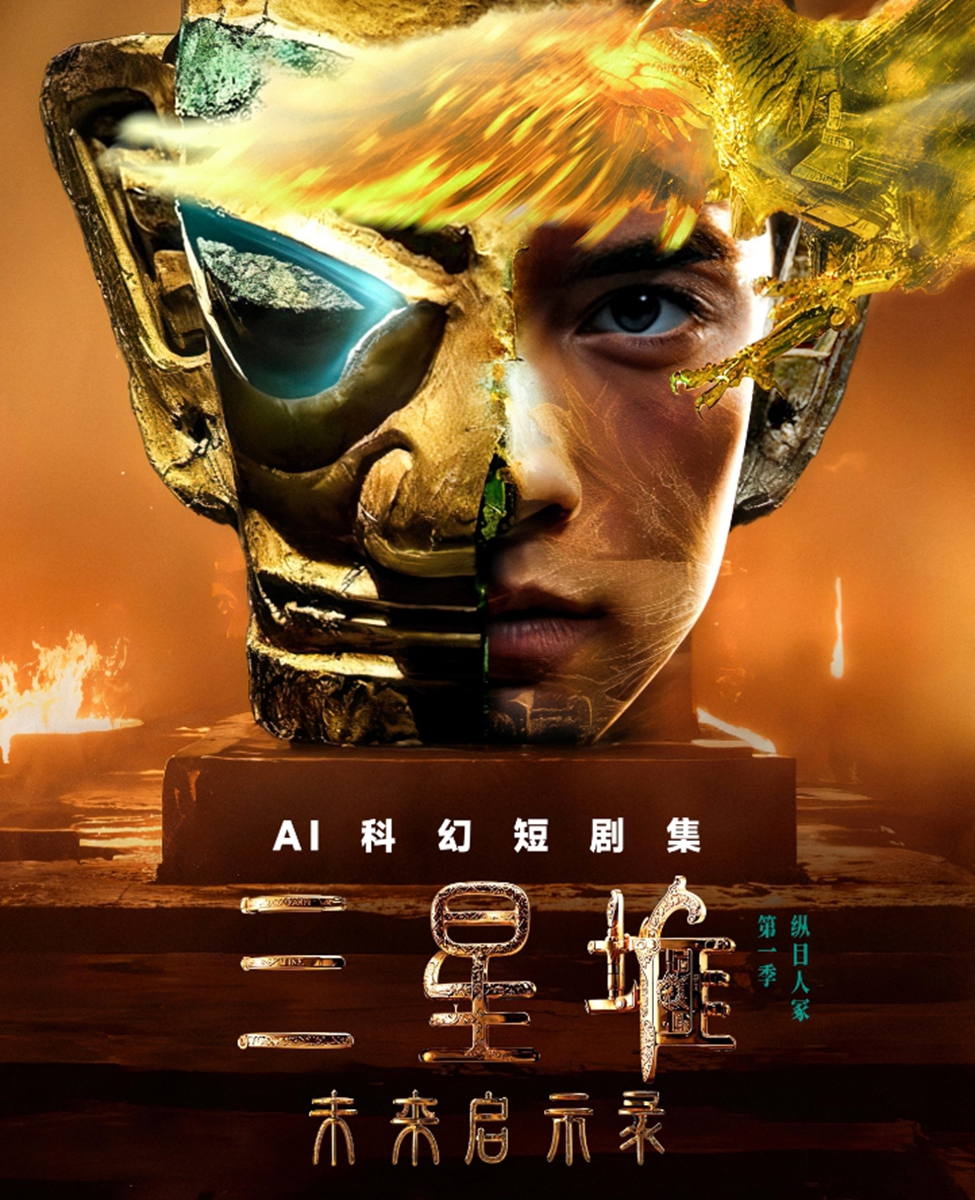
Promotional material of Sanxingdui: Future Apocalypse Photo: Courtesy of the Bona Film Group
With the support of leading generative AI models, most of the cultural relics from the Sanxingdui Ruins, which have been extolled multiple times at museums, appear in droves in a short sci-fi drama completely made by AI generative technology, building a world connecting the thousands- year-old Shu civilization and the future of humanity.
Debuting on Monday, this is the first AIGC short narrative series made in China, the production team of Sanxingdui: Future Apocalypse told the Global Times on Sunday, noting that the AIGC work represents the most cutting-edge generative AI technology. Considering the unsolved mysteries and unearthly styles of the cultural relics of the ancient Shu civilization found at the Sanxingdui Ruins, Southwest China's Sichuan Province, producers attempted to use the most advanced technology to create a novel collision and blend between tradition and modernity.
Set in the near future, Sanxingdui: Future Apocalypse presents a world with rapidly developing technology. Representatives of three agencies enter a digital recreation of the ancient Shu Kingdom, kicking off an adventure across time that unveils the mysteries of the ancient Shu Kingdom from 4,000 years ago.
Besides well-known Sanxingdui cultural relics such as the Golden Mask and Bronze Standing Figure, the drama buzzes with imagined mythical creatures from the Classic of Mountains and Seas, a book of Chinese mythology. The reproduction and creation of these images by AI generative technology was one of the major challenges facing the production team.
Completing the drama took much longer than the team originally expected, even though the team consists of top experts in the field of generative AI technology from the Bona Film Group and Dreamina AI.
To prepare for the project, the production team conducted extensive investigation and research. They went to the Sanxingdui Museum to dig deeper in the cultural relics and history of the ancient kingdom, while tightening up programming techniques to provide firm support.
The team first generated pictures of the scenes and characters in the drama and then made these static images move through AI technology such as transformer and diffusion models and style transfer. Meanwhile, AI technology such as automated video editing algorithms were used during editing and post-production to create a better sense of realism in the drama.
"For us, the most important thing is to train a team that knows how to use AIGC tools. This team should actually be in a collaborative relationship with AI, rather than treating AI as a tool," the leader of the production team pointed out. To this end, they adopted the mode of man-machine co-creation while producing the AIGC series, giving full play to the leading role of human beings in creation.
China is far ahead of other countries in generative AI applications like chatbots, filing six times more patents than its closest rival the US, according to recently published data by the UN. The Chinese patent applications cover a broad area of sectors, from autonomous driving to publishing.
These soaring AI inventions indicate that China's AIGC is standing on the eve of a technological boom with limitless prospects for the future, Ding Daoshi, a veteran analyst in the AI sector, told the Global Times. The slickly executed scenes in the AIGC series are proof of this.
On a forum held at the 2024 World Artificial Intelligence Conference in Shanghai, Chinese experts noted that AI generative technology in the field of film and TV production will undergo rapid evolution, just taking about three to five years to finish 100 years worth of film technology development. The AIGC center of the Bona Film Group has planned a "Three-Step" program, going from developing AIGC short videos to AIGC feature films step by step. It will also adapt more traditional stories from Chinese culture besides the Sanxingdui relics.
"The major leap forward in producing AI generative video can undoubtedly help with the preservation and creative development of traditional culture. There have been lots of attempts, catering to the urgent need in the sector to protect cultural relics and traditions," Ding said.




